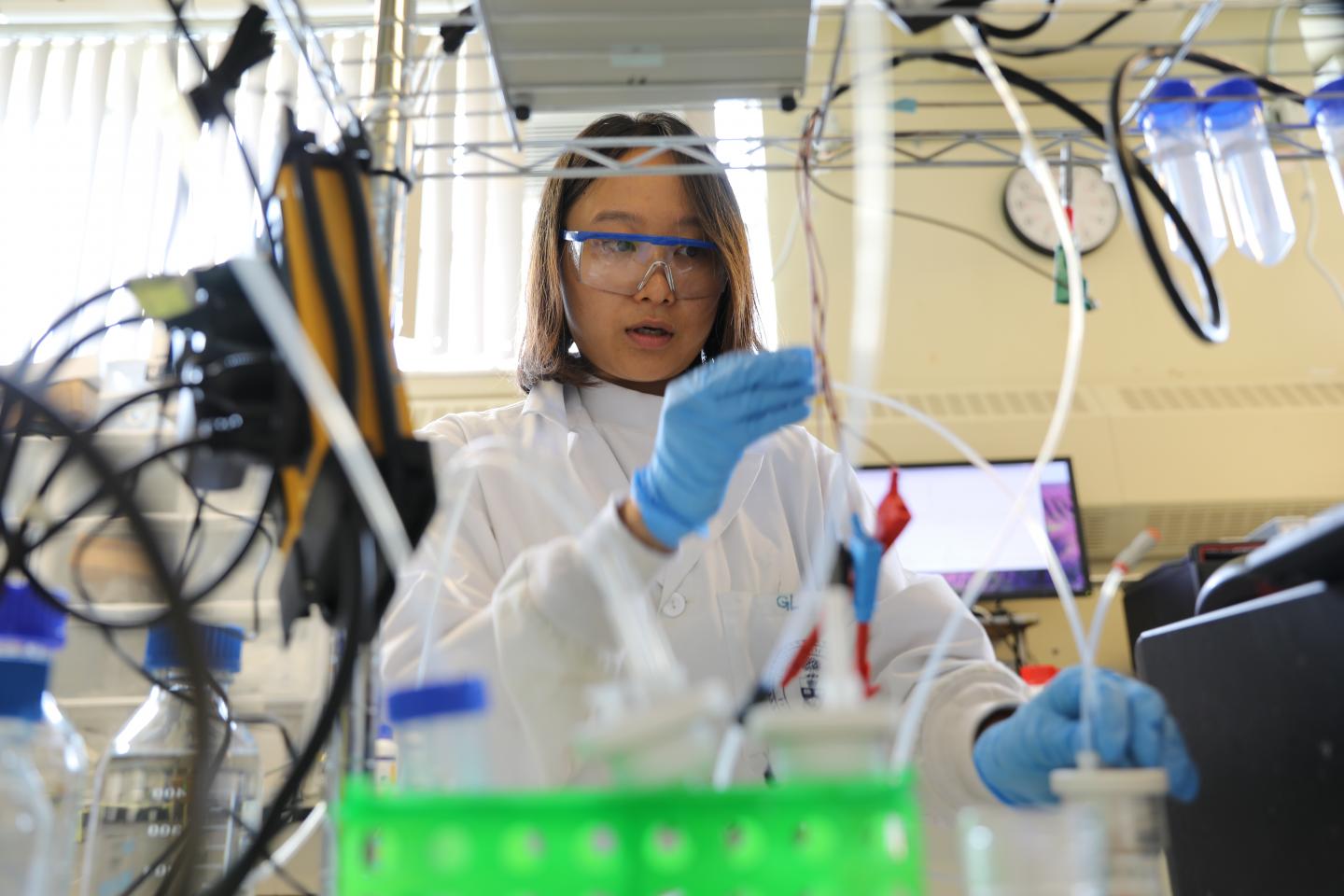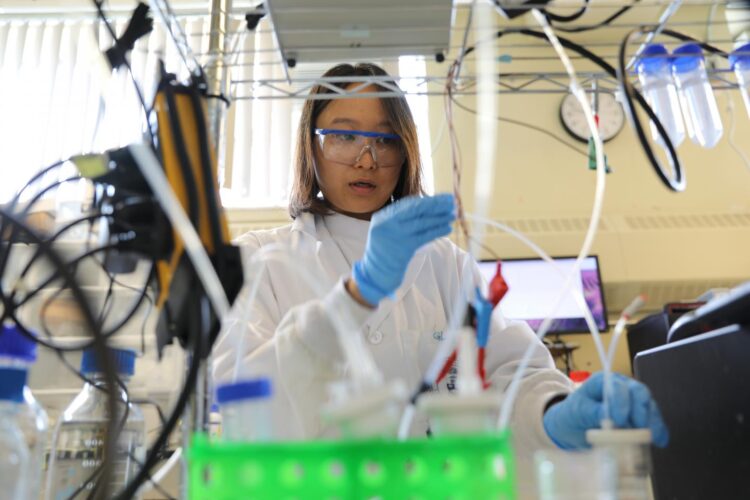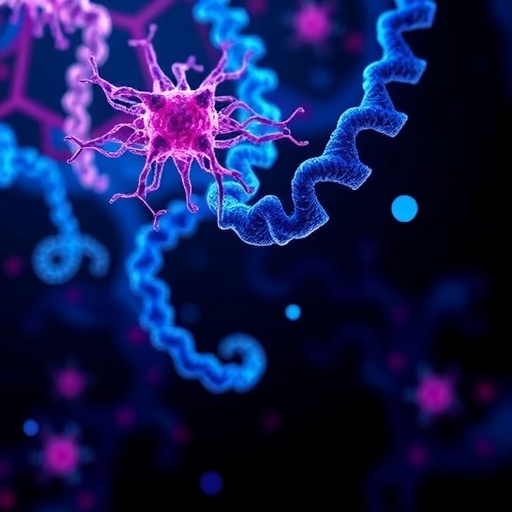A new paper in Nature Energy outlines an electrochemical method for converting captured carbon into useful products, from fuels to plastics.

Credit: Photo: Marit Mitchell
A team of researchers from University of Toronto Engineering has created a new process for converting carbon dioxide (CO2) captured from smokestacks into commercially valuable products, such as fuels and plastics.
“Capturing carbon from flue gas is technically feasible, but energetically costly,” says Professor Ted Sargent, who serves as U of T’s Vice-President, Research and Innovation. “This high energy cost is not yet overcome by compelling market value embodied in the chemical product. Our method offers a path to upgraded products while significantly lowering the overall energy cost of combined capture and upgrade, making the process more economically attractive.”
One technique for capturing carbon from smokestacks — the only one that has been used at commercial-scale demonstration plants — is to use a liquid solution containing substances called amines. When flue gas is bubbled through these solutions, the CO2 within it combines with the amine molecules to make chemical species known as adducts.
Typically, the next step is to heat the adducts to temperatures above 150 C in order to release the CO2 gas and regenerate the amines. The released CO2 gas is then compressed so it can be stored. These two steps, heating and compression, account for up to 90% of the energy cost of carbon capture.
Geonhui Lee, a PhD candidate in Sargent’s lab, pursued a different path. Instead of heating the amine solution to regenerate CO2 gas, she is using electrochemistry to convert the carbon captured within it directly into more valuable products.
“What I learned in my research is that if you inject electrons into the adducts in solution, you can convert the captured carbon into carbon monoxide,” says Lee. “This product has many potential uses, and you also eliminate the cost of heating and compression.”
Compressed CO2 recovered from smokestacks has limited applications: it is usually injected underground for storage or to enhance oil recovery.
By contrast, carbon monoxide (CO) is one of the key feedstocks for the well-established Fischer-Tropsch process. This industrial technique is widely used to make fuels and commodity chemicals, including the precursors to many common plastics.
Lee developed a device known as an electrolyzer to carry out the electrochemical reaction. While she is not the first to design such a device for the recovery of carbon captured via amines, she says that previous systems had drawbacks in terms of both their products and overall efficiency.
“Previous electrolytic systems generated pure CO2, carbonate, or other carbon-based compounds which don’t have the same industrial potential as CO,” she says. “Another challenge is that they had low throughput, meaning that the rate of reaction was low.”
In the electrolyzer, the carbon-containing adduct has to diffuse to the surface of a metal electrode, where the reaction can take place. Lee’s experiments showed that, in her early studies, the chemical properties of the solution were hindering this diffusion, which in turn inhibited her target reaction.
Lee was able to overcome the problem by adding a common chemical, potassium chloride (KCl), to the solution. Though it doesn’t participate in the reaction, the presence of KCl greatly speeds up the rate of diffusion.
The result is that the current density — the rate at which electrons can be pumped into the electrolyzer and turned into CO — can be 10 times higher in Lee’s design than in previous systems. The system is described in a new paper published today in Nature Energy.
Lee’s system also demonstrated high faradaic efficiency, a term that refers to the proportion of injected electrons that end up in the desired product. At a current density of 50 milliamperes per square centimetre (mA/cm2), the faradaic efficiency was measured at 72%.
While both the current density and efficiency set new records for this type of system, there is still some distance to go before it can be applied on a commercial scale.
###
Media Contact
Fahad Martin Pinto
[email protected]
Original Source
https:/
Related Journal Article
http://dx.





